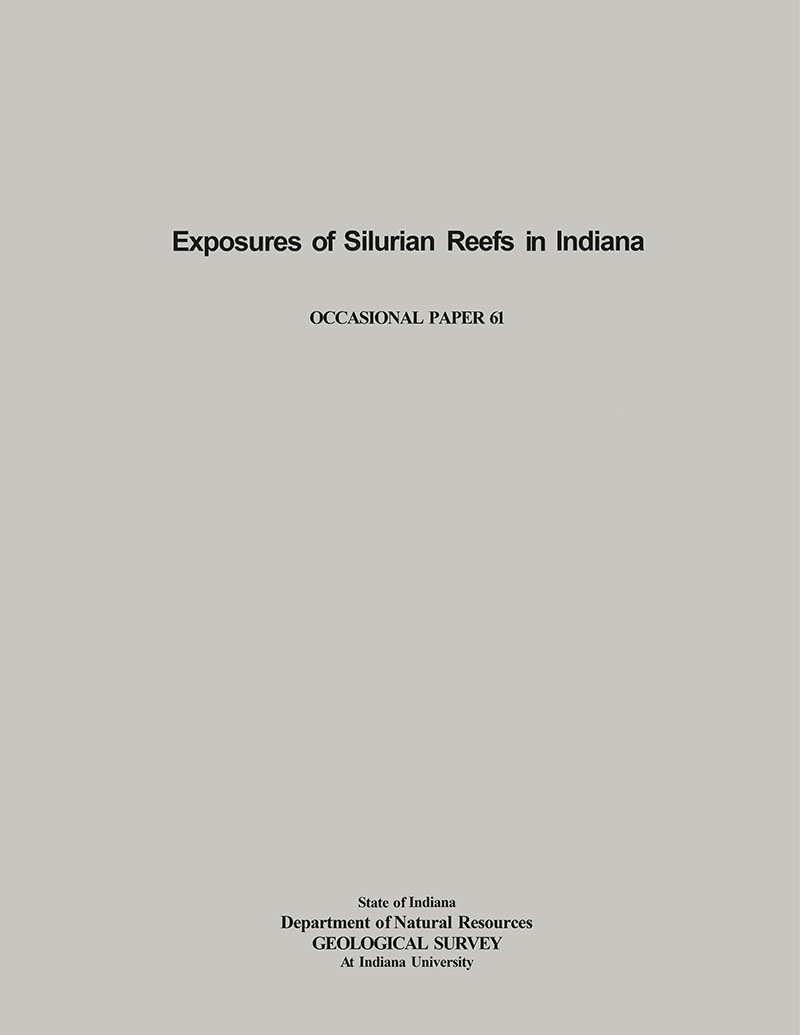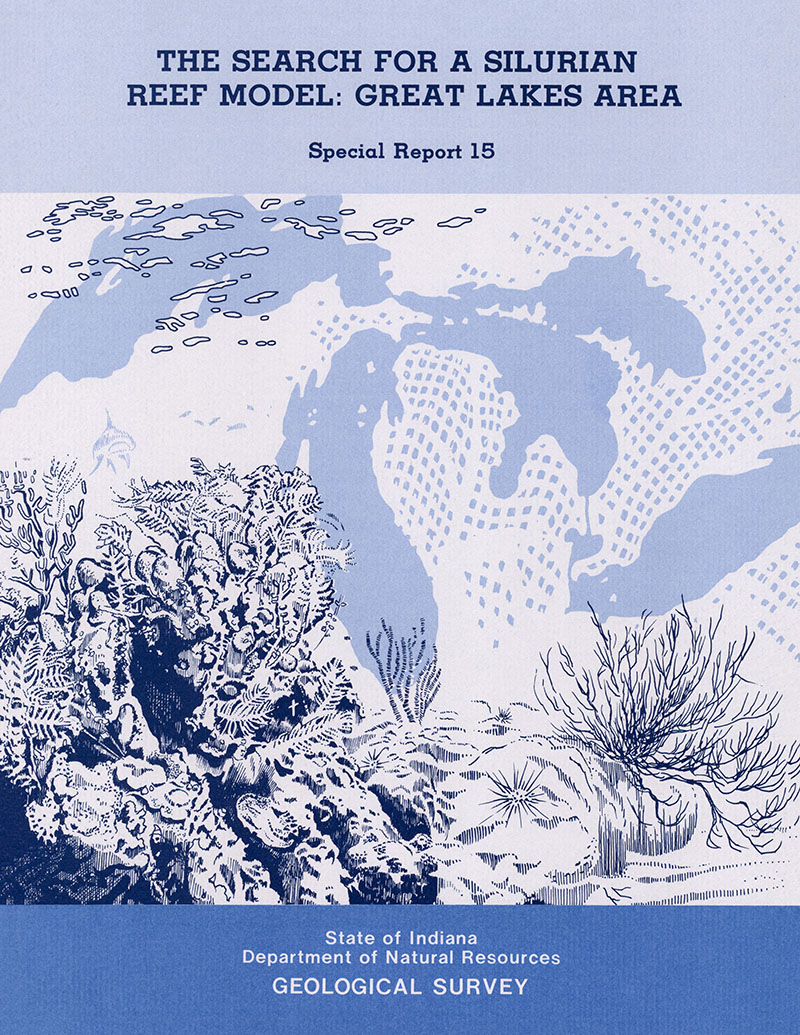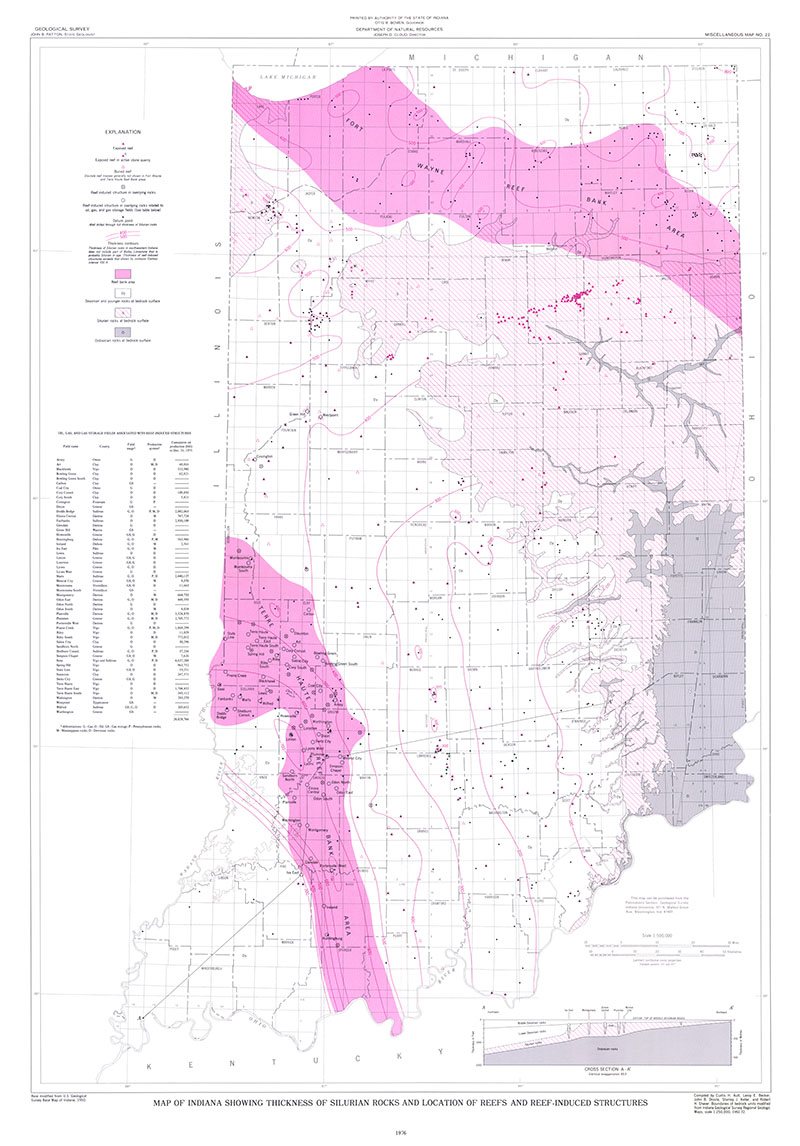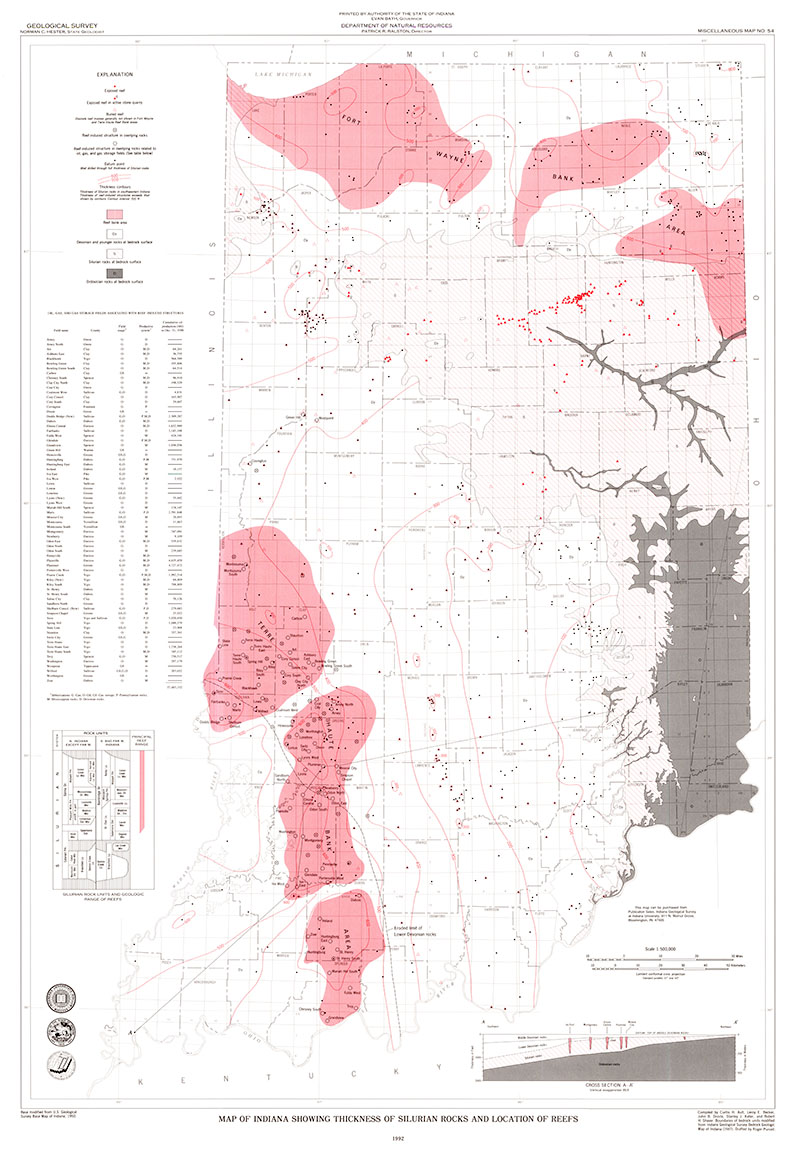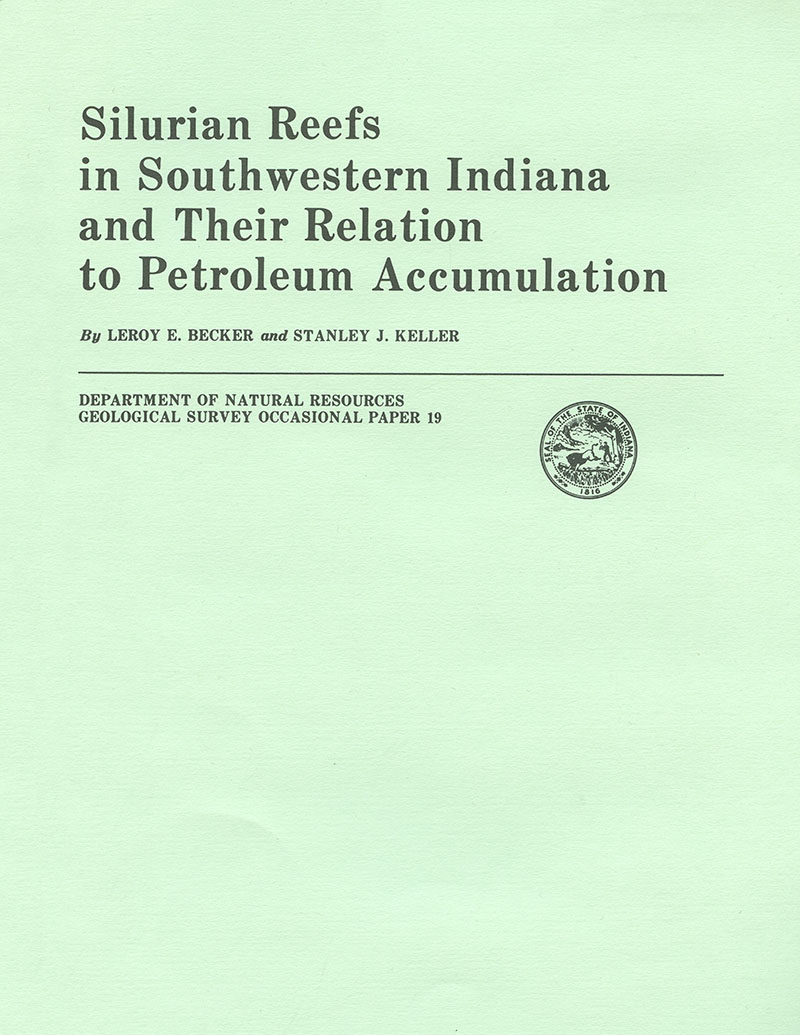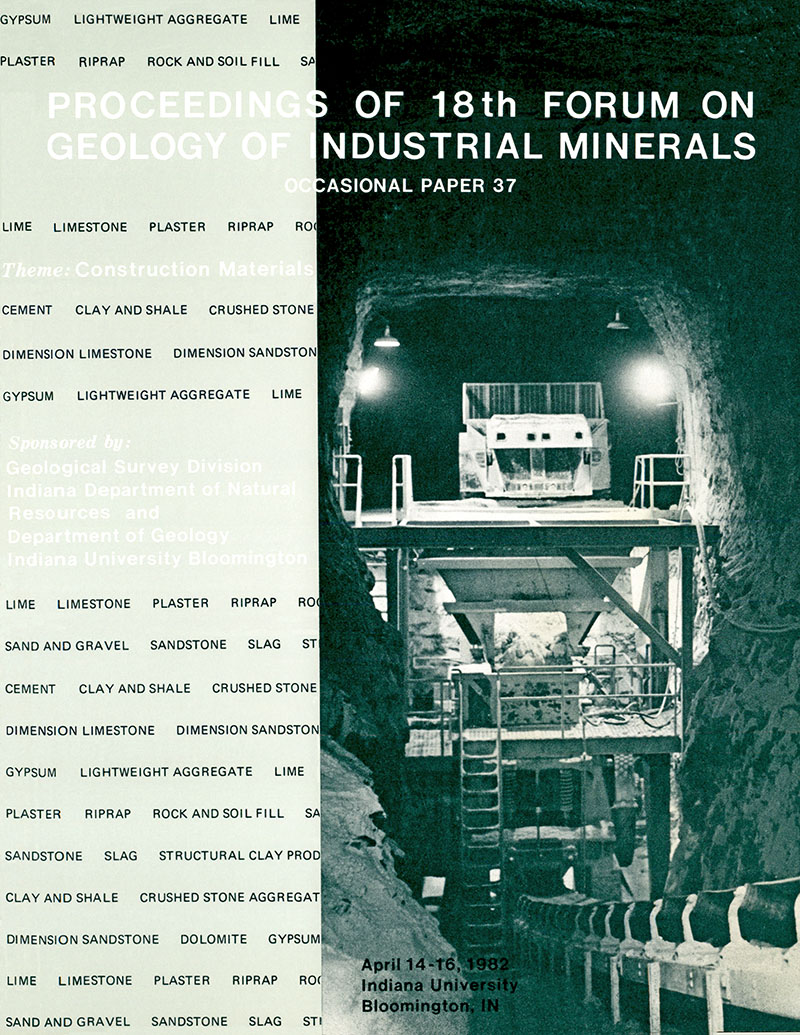Numerous Indiana geologists, quarries, and others have searched for, admired, photographed, climbed, sampled, drilled, cored, analyzed, and mined the exposed Silurian reefs of Indiana. From before 1862, when Richard Owen described the curious tilted outcrops of reefal limestone in several places in northern Indiana, pioneer geologists and others speculated on the origin of the reefs with ideas of structural deformation, arches, false bedding, and even volcanism. These imaginative ideas were generally set to rest in 1928 (Cumings and Shrock, 1928a, 1928b). Since then much more has been learned about the reefs (Shaver, 1991), numerous additional reefs have been discovered (Ault and others, 1976, 1992), and their practical usefulness for many chemical and physical products has expanded dramatically. From early pioneer times, quarries in northern Indiana, especially in the Wabash Valley, mined the reefs for roadstone and railroad ballast and burned the stone to make lime for mortar, agricultural lime, and whitewash. The reef rock was also used with other Silurian carbonate rock for foundation stone, flagging, and building stone.
Ault, C. H., 1992, Exposures of Silurian reefs in Indiana: Indiana Geological Survey Occasional Paper 61, 29 p.
You may also like:
Keywords: industrial minerals, reef, Silurian
Can't find what you're looking for? Feel free to contact us directly:
Indiana Geological and Water Survey
1001 E. 10th St.
Bloomington, IN 47405
812-855-7636 (phone)
812-855-2862 (fax)
IGWSinfo@indiana.edu
IGS Return Policy
- Original sales receipt required.
- Returns accepted within 30 days of purchase date.
- Refund will be issued by the same method of payment as purchased.
- Products must be returned in the same new condition as purchased.
- Refunds on custom orders and digital products are NOT allowed.
- Customers are responsible for paying shipping costs to return products.
Updated 8/19/2020



